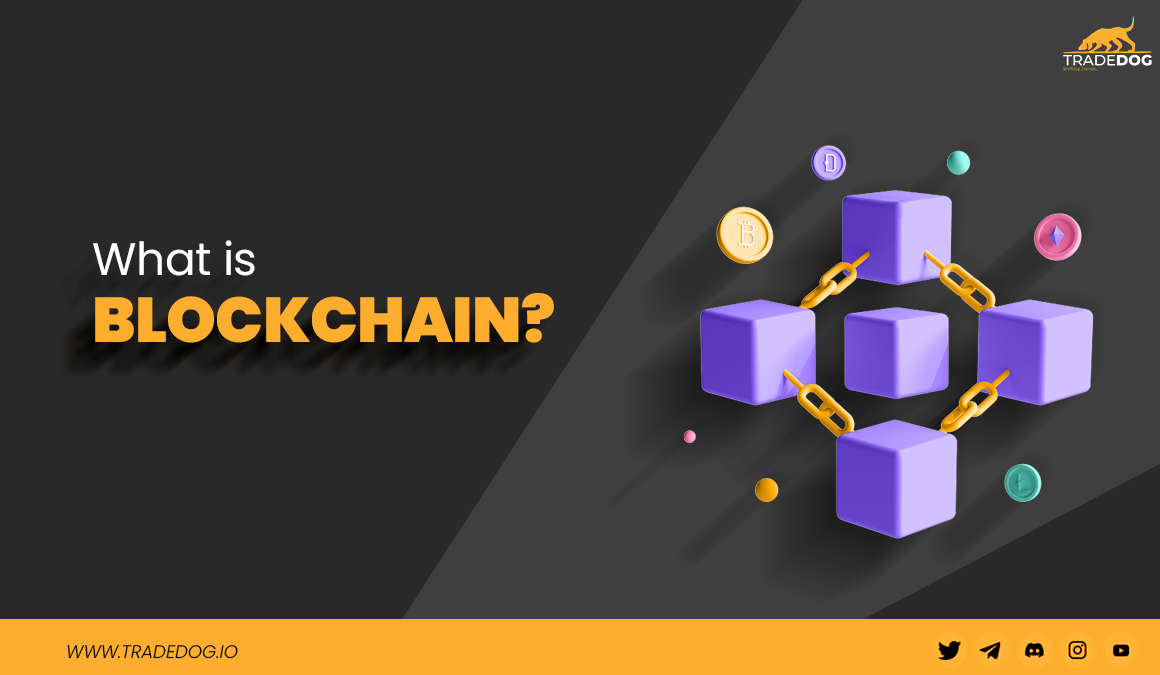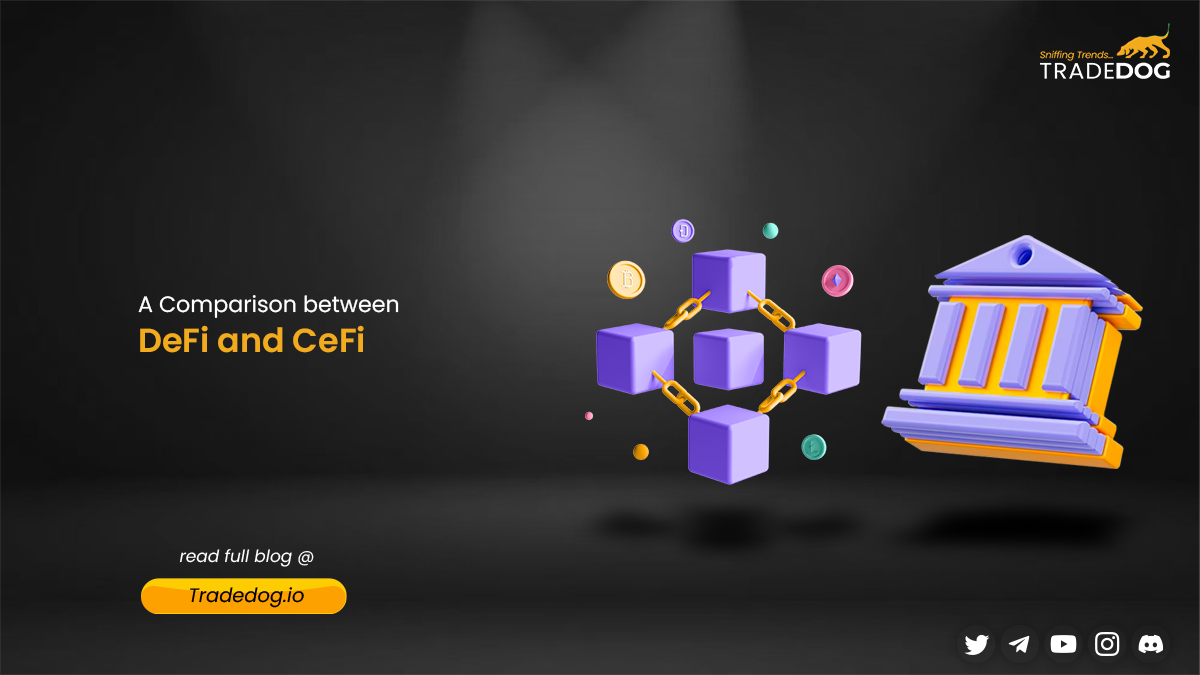Have you ever considered a simpler method for completing transactions without relying on a third-party application? The banking system is essential to the functioning of the global economy, hence every bank failure has a significant impact on both the dependent and the primary nation. Our daily transactions are hampered in a number of ways, including when a bank server is down, a technical problem occurs, or there is a fixed transfer limit.
All of these issues prompted the development of cryptocurrency or digital money that runs on the blockchain. They provide remedies to the fundamental issue of fiat money. They are safeguarded by robust and sophisticated algorithms, are impervious to counterfeiting, and are not governed by a single entity.
What is blockchain?
Blockchain, in its simplest form, refers to the entire network of distributed ledger technology. A distributed ledger is a database that is widely accessible and consensually shared across numerous locations, organizations, or geographies. It enables transactions to have “witnesses” in the public eye. Each participant can access and keep a duplicate copy of any recordings that are shared among network nodes. Any additions or modifications to the ledger are immediately reflected and duplicated to all participants.
A ledger is a book that keeps track of every financial account of a specific kind. Blockchain, then, is a unique sort of database that generates a variety of unchangeable digital ledgers of economic transactions that can be set up to record and track not only financial transactions but also pretty much anything of value.
Let’s use an example to better grasp this now. Assume that four buddies went out to supper and that one of them paid the bill. The other 3 have now transferred their shares using a cryptocurrency, let’s say bitcoin. Every time a transaction is made, a block is formed that includes all the relevant facts, such as the amount sent, the amount held in reserve, the sender, and the receiver. Thus, for all 3 friends, 3 different blocks were created which were linked to each other sequentially forming a chain, as each of them takes reference from the previous one for the number of bitcoin each one owns. This chain of records or blocks is called a ledger. This ledger is accessible to all friends to verify and validate; it acts as a publicly distributed ledger. This forms the basis of blockchain.
This technology is a boon to all industries and has the potential to solve major problems around the world. It is applicable to various industries like supply chain, healthcare, automobiles, banking sector, telecommunication, etc. The blockchain can keep track of things like voting, land titles, and even medical records. This shared, distributed, and immutable ledger keeps track of all previous transactions beginning with the very first transaction. It establishes trust, accountability, and transparency. It stores information in blocks, which are linked together sequentially forming a continuous line. Each blockchain is like a page of a ledger or a record book.
Every block has mainly 4 elements:
- Data – It consists of the information regarding the transaction that took place. For example, Incase of a bitcoin, a block will contain information about the sender, receiver, and number of coins transacted.
- Time-Stamp – It verifies the data and assigns a time or date of creation of the block.
- Hash – Hash is an encrypted code that identifies the block and its content. It is unique like a fingerprint or signature.
- Pre Hash (Hash of the previous block) – This is the encrypted code of the previous block i.e., information of the previous transaction that took place. This way they create a chain that is linked in sequence and becomes very secure.
How does blockchain secure itself?
As already mentioned before, each blockchain contains a hash which is a unique code that identifies the data stored in the block. They also contain a pre-hash which has the information about the previous block. Like this, it creates a chain of blocks in the order of transactions that took place. Tampering with the block within a blockchain causes the hash of the block to change. This makes the following block linked to it invalid. Thus, in order to successfully tamper the whole blockchain one has to change the hash of all the blocks linked to it, which is nearly impossible to do. This setup gives the blockchain a massive level of security.
Proof of work (POW) is the second method through which blockchain secures itself. It is essentially a decentralized consensus method that forbids any tampering with the system by requiring network participants to spend time-solving a random mathematical puzzle. It slows down the production of blocks. For instance, calculating the requisite PoW and adding a new block to the chain both take around ten minutes in the case of Bitcoin. Because if you mess with one block, you have to mess with all the subsequent blocks, and this timeline makes it very difficult to change a block. A blockchain like the one used by Bitcoin has hundreds of thousands of blocks, making it extremely difficult to successfully manipulate.
A third way they secure themselves is by using peer-to-peer networks i.e., by being distributed. Everyone is welcome to join public blockchains like the one used by Bitcoin. A validator or node is the name given to each node in the network. Everyone who joins the network receives a complete copy of the blockchain. The node can then confirm that everything is still in working condition.
Advantages of Blockchain Technology
- Immutability – It is impossible to erase or replace any transaction on the blockchain. Thus, it prevents the tampering of data.
- Transparency – As it is a decentralized network, every user has access to the entire database of transactions. Any member can verify the data recorded and thus, adds the trust factor to the network.
- Traceability – It is very difficult to change data once recorded in a blockchain which makes it simple to trace network changes.
- Censorship – There is no single party guiding or controlling the system. Thus, making it free from any censorship.
Disadvantages of Blockchain Technology
- Speed and performance – When compared to the traditional database, blockchain is slower as it carries out various operations. First, it has to verify the signature then it depends upon a consensus mechanism in order to validate the transaction. Consensus mechanism like proof of work has a low transaction throughput rate. Finally, there is redundancy where each node plays an important role in verifying and storing each transaction.
- Implementation cost is high as business or organization requires thorough planning and execution if they want to integrate blockchain into their process.
Types of blockchain and its applications
Now, there are 2 types of blockchain: permissionless blockchain and permissioned blockchain. A permissionless blockchain is a public blockchain that is accessible to all. Whereas, permissioned blockchains are enterprise blockchains that are built to conduct transactions on a safer network. In a business, there is some private information that should not be accessible to all. Thus, to prevent unwanted access and set up a multichain, people employ blockchain technology in various contexts. There are 4 types of blockchain:
- Public blockchain – It is a permissionless distributed ledger that allows anyone to join and conduct transactions. It is very transparent, as anyone with an internet connection can access the public blockchain. Every user has access to previous and current records and the ability to perform mining operations.
It is nearly impossible to alter records or transactions as it is an open-source code and anyone can check the transaction, uncover problems, and suggest fixes. Most of the big names in crypto like bitcoin, Ethereum, litecoin are examples of the public blockchains.
- Private blockchain – When a blockchain is controlled by a single identity i.e., it operates in a restricted network, it is a private blockchain. It has similar peer-to-peer connections and decentralization but it runs on a small network within an organization. They are a permissioned blockchain which means it is not open to anybody who wants to contribute processing power.
It has various notable use cases in the industry like financial services, healthcare sector, supply chain, real estate, retail, insurance etc. Hyperledger, Ethereum enterprise, R3 Corda are some examples of private blockchain.
- Hybrid blockchain – A hybrid blockchain provides the best of both worlds. It combines features of both private and public blockchains. An organization can construct a private, permission-based system alongside a public, permissionless system, allowing them to choose who has access to certain Blockchain data and what data is made public. In a hybrid blockchain, transactions and records are typically not made public, but they can be validated if necessary by granting access via a smart contract.
This blockchain technology is widely applicable to healthcare, real estate, and financial sectors. It provides a solution in the circumstances, where data must be secure privately but must be accessible to the public. For example; IBM Food Trust, Ripple Network etc.
- Consortium Blockchain – Consortium blockchain is also known as federated blockchain as it involves various organizational members working together on a decentralized network. In simple words, it is a group of private blockchains, each owned by individual institutions that have banded together to share information to improve existing workflows, transparency, and accountability.
For example – In supply chain business, CargoSmart a well known company in the maritime industry established a Global Shipping Business Network Consortium, which is a not for profit blockchain consortium that digitizes the shipping sector and helps the industry operator to collaborate more efficiently.
Conclusion
Globally, blockchain is rapidly gaining popularity. Market revenue for blockchain technology is expected to grow from 0.98 billion USD in 2017 to 162.84 billion USD in 2027. Shaktikanta Das, the governor of the RBI in his recent interview stated that while cryptocurrencies should be outlawed because they will allow the RBI to lose control over the Indian economy, he was in favor of adopting blockchain technology because it has the ability to address a number of real-world issues.
Blockchain technology is being employed in many different sectors, including supply chain, healthcare, cars, communications, insurance, banking and financial services, and IT. Since blockchain may eliminate middlemen while boosting accuracy, efficiency, security, and cost in business and government operations, it is a profitable investment.













